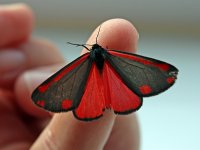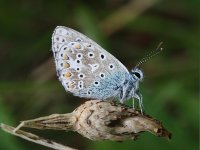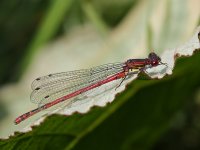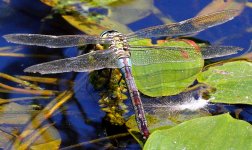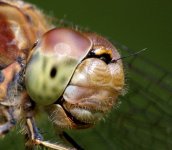Hmm ok macro lenses on offer: note that they are pretty much all tacksharp options so you won't be getting noticably lesser image quality in the field with any of them (exception possibly the canon 50mm macro). So you can make your choice on budget and needs in the field.
Canon 50mm macro - this is not a true macro lens and only achives half of the true magnification that the rest achive (that is it only does 1:2 macro). It can perform true 1:1 macro by also bying the macro lens adaptor for this lens - however by then the cost of the two lenses would have let you get a single true macro lens of longer focal length. This is a macro lens I would avoid.
Sigma 50mm macro - its a solid performer, though lacking in any fancy sides. Note also that its budget range and I have met quite a few people who feel its contstruction is a little flimsy.
Canon EFS 60mm macro - a very good performer, don't let the EFS part throw you. It's a very solid short range macro lens, ideal for static subjects and working in very close environments. The EFS only compatabilty only really a limitation if you intend to go full frame later
Tamron 60mm macro *as yet not released* - this new and unreleased macro lens is very much like the canon in that its only for crop sensor cameras, however feature wise its more comparable to the canon 100mm, since it sports inner focusing and an increased working distance similar to that of the 100mm focal range lenses. Image quality wise is not yet known, but based on the 90mm by this company it is expected to be very high
Sigma 70mm macro - often stated as being on of Sigma's sharpest lenses this is a good short range macro which also will work on a fullframe camera. As an additional point it will also work well with sigma teleconverters, displite not being listed as compatable on their website (I have done this and the link is smooth and not forced). Aside from that its AF is slower and noisy (though there is a limiter switch) and it does extend whilst focusing, though its front element does not rotate (so polarizers are easy to use).
Tamron 90mm macro - a very sharp lens and often the best budget option for people interested in insect work, since the lens offers a good working distance as a respectable price, without sacrificing image quality
Canon 100mm macro - one of the most popular choices and also a lens with one of the better AF systems, being faster than most macro lenses. Its a very solid performer in all respects, though note that canon do not sell this lens with its lens hood nor with its tripod collar
Sigma 105mm macro - Again this is a sharp macro lens from sigma, though again its lacking in perks like fast AF its image quality is still very high standard and it makes a good choice for macro work in this focal range
Sigma 150mm macro - A lens fast becoming popuplar with macro workers with insects this lens offers a greater working distance. Further this lens is the start of the higher class macros from sigma, sporting inner focusing, HSM focusing and teleconverter compatability. Note that its AS, whilst HSM *so quite and always manual as an option) its not blindingly fast, a decent speed, but not outstanding. This lens is often considered the longest focal length macro which is still suitable for prolonged handheld macro work
Sigma 180mm macro - sporting features like the shorter 150mm macro this is another highclass macro from sigma; again having inner focusing, HSM and teleconverter compatability. However all this is at a slightly longer focal range (and thus longer working distance). Note that whilst handheld is still an option for this lens its often a more tripod suited lens than handheld suited - though of course this is just a general view and many do use this lens handheld. Note that many people choose this lens (or the tamron) over the canon.
Tamron 180mm macro - for some reason a less popular macro lens choice than the sigma 180mm, dispite this lens still being a solid performer devlivering a very good image quality
Canon 180mm macro L - the most expensive 180mm lens by far and also the only L grade one, though whilst it has teleconverter compatabilty (for canon TCs) it is not weathersealed (far as I know). In addition its build is very solid, but of course makes this a much heavier lens and very much more suited to being used on a tripod setup. Dispite its L status its sharpness is still on par with the rest of the range, so one does not get blindingly sharper shots with this expensive lens.
Some terms:
Inner focusing - the lens will not extend as you adjust the focus, all movement is done inside leaving the lens always at the same length
Some notes:
Focal length and working distance - simply put the longer the focal length the longer the distances from the camera body to the subject when taking a shot at full magnifcation (1:1).
AF - most macro lenses have a poor af functionality, this is partly the result of having very fine focus controls leaving the AF a lot of range to move through when compared to most regular lenses which lack this fine level of control. Though most macro lenses hava limiter switch to void using the closer distances for AF, most are still comparativly slow to focus.
For macro work though this is not a problem since the majority of macro work is done via manual focus, due to AF often not being able to aquire reliable focus (a product of working in dim lighting and so close). Typical method is to set to focus to fixed point and then move the lens and camera closer - gently rocking as you get near the point of focus to put it directly where you want it to be. One can also adjust the focus ring whlist doing this - though note that doing so will mean your not working at a known magnifcation factor (important for some who like to measure bugs off photos).
Tripods - these are often used for static macro work and still (cold) insects when there is time to setup the rig and take a shot. It offers unbeatable stabilty in a shot as well as the option of longer shutter speeds in still conditions. However macro work has some demands of its own - a tripod should idealy have a very low min height since working at ground level is common; then a tripod head is needed, typically ball heads are not well suited to macro work since they will droop down when the pressure is applied and your hands release the setup. This is not noticable for regular shooting, but at macro ranges the tiny droop will noticable change your framing. Further macro 3way heads and ballheads will struggle to hold a macro setup perfectly still without any drooping. The best head for macro work is the heavy and expensive Manfrotto Junior Geared head, it allow for very precise control of each axis of movment without having any droop problems - if tripod work is your prefered line then this is a must get head. Finally to focus the macro work best you are going to need a focusing rail on the setup also - moving the tripod setup back and forth in tiny movements to get perfect focus is not practical in the field and a rail is needed for this task. Myself I do not like the manfrotto wormscrew focusing rail and much prefer the design of the Novoflex (there are cheap ebay focusing rails of a similar design which are decent and more affordable)
Recomended working distances - if your intending to work with static subjects then there is no demend on a longer working distances; whilst if insects are your intended subject a longe working distances is very desirable since it puts greater distance between you and the subject and thus a lesser chance of spooking the insect. Generally speaking 90mm is the shortest recomended focal length for insect work
Focal length and Bokeh - longer focal length macros will yeald a greater amount of background blur in shots than shorter focal length ones. This is something to bare in mind when choosing a macro lens and many a photographer will even use teleconverters to get that increased blur in the background of a shot
Teleconverters and effects - if you add a teleconverter to a macro lens the minimum focusing distance of the setup remains the same, however your magnifcation factor increases by a set amount over the length of the lenses focus. This means that you can not only get shots greater than 1:1 magnfication, but also have an increased working distance at the 1:1 point (remembering that this point is now further along the lenses focusing range and not right at the closest focusing point).
Lighting:
When shooting macro also remembe that lighting is a key component in anyones setup since working at macro work around 1:1 is very dim work. You will need good strong lighting or a tripod and slow shutter speed toget the shots you need. This is a further increased problem since depth of field (area of a shot in focus) at macro distances is very small thus typical apertures used range from f8 to f13 - f16 is the lower limit since after that point diffraction can cause softening in the shot.
There are several lighting setups;
Natural light - just bare sunlight, this is good in still weather for static subjects but becomes much harder to use for moving subjects and for handheld work, depending of course on how much light you get. Its also important to note that its less controled - you have to position youself right to avoid shadowing the shot
Reflectors - these don't have to be massive for macro work and are great for directing natural light onto the subject. They are also very light and cheap so can provide a good addition to an existing setup. Note also that in strong sunlight a diffusion filter can be used to block some of the suns light to avoid hotspots
Flash - good macro flash is a massive subject to itself with many different setups possible. Basically put this form of lighting gives you the advantage of controling the lighting and its the prefered option used by many insect and handheld operators when subject and user shake/movment place demands on shutter speeds.
 ) lens...
) lens...



